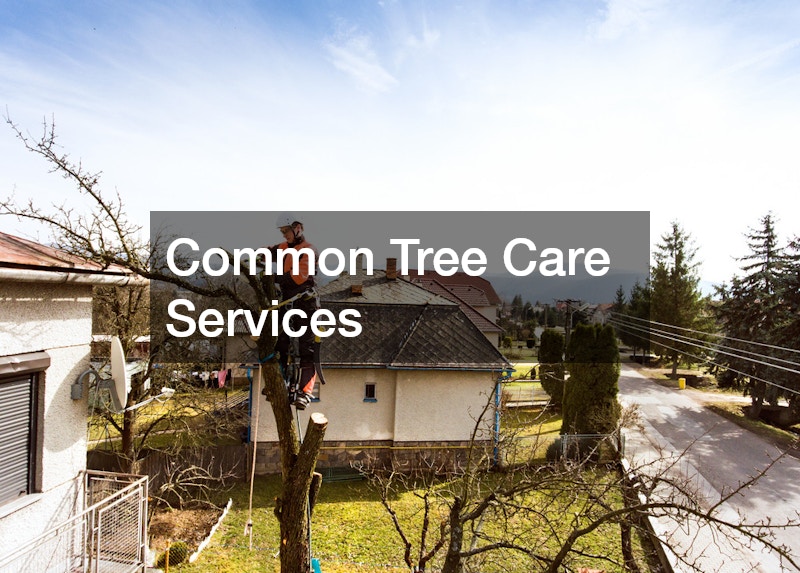However, without proper care, they can become liabilities. Whether it’s routine maintenance or emergency services, they have the training, equipment and expertise to assess and manage trees correctly. This guide outlines what to look for when hiring an arboriculturist and why professional tree care is worth the cost.
Understanding the Role of an Arborist
They are a specialist in the cultivation, management and study of trees, shrubs and other woody plants. Their work encompasses a broad range of services, including pruning, pest and disease diagnosis, tree removal, risk assessment and planting advice. Arboriculturists understand tree biology and are trained to work safely and effectively at heights and near powerlines.
In Australia, qualified tree surgeons typically hold a Certificate III in Arboriculture or higher. Many are also members of professional organisations such as Arboriculture Australia or the International Society of Arboriculture (ISA), which promotes high standards of tree care and continuous professional development.
Reasons to Hire a Professional
Hiring a professional woodsman ensures your trees receive the best care possible. Unlike general gardeners or handymen, arboriculturists have in-depth knowledge of tree health, species-specific requirements and risk management. Here are some key reasons to engage a professional:
- Tree Health and Safety: They can identify early signs of disease, decay or structural weakness that may not be visible to the untrained eye. By addressing these issues early, you can avoid costly damage or loss.
- Legal Compliance: Many councils require permits for pruning or removing protected trees. They can help you navigate local regulations and submit necessary applications.
- Emergency Response: In the event of storm damage or fallen branches, an woodsman can provide immediate assistance, safely removing debris and assessing tree stability.
- Long-Term Planning: They offer tailored care plans to ensure the long-term health of your trees, considering species, soil conditions and your property’s layout.
Choosing the Right Arborist
Selecting the right professional is critical to ensuring quality work and avoiding further damage. Use the following criteria to guide your decision:
- Qualifications and Insurance
Always confirm that the tree surgeon holds relevant qualifications and current public liability and workers compensation insurance. This protects you in the event of property damage or personal injury during the job. - Experience and Reputation
Look for a provider with a strong local track record. Ask for references or check online reviews to gauge customer satisfaction. A reputable woodsman will be happy to share examples of previous work. - Transparent Quoting
Request a detailed written quote that outlines the scope of work, including cleanup and disposal. Be wary of quotes that seem unusually low, as these may indicate corner-cutting or hidden costs. - Safety Practices
Tree work is inherently dangerous. Ask about the safety procedures, equipment standards and compliance with WorkSafe requirements. The use of safety gear, climbing techniques and proper machinery is non-negotiable. - Environmental Considerations
A professional arboriculturist will aim to preserve trees wherever possible, rather than recommend removal as the first option. They should also dispose of green waste responsibly or offer mulch recycling where available.
Questions to Ask Before Hiring
To ensure you’re making an informed decision, consider asking the following:
- Are you fully qualified and insured?
- How long have you been in business?
- Can you provide references or examples of similar jobs?
- Do you provide a written quote and timeline?
- What safety measures do you use on-site?
- How do you manage green waste?
Their answers will reveal their professionalism and whether they’re the right fit for your project.
Common Tree Care Services

Understanding the types of services a tree surgeon offers can help you determine what you need:
- Pruning: Removes dead or hazardous branches, shapes the canopy and improves sunlight penetration.
- Tree Removal: Carried out when a tree is dead, diseased or poses a threat to property or safety.
- Stump Grinding: Eliminates stumps left after tree removal, allowing for replanting or landscaping.
- Cabling and Bracing: Provides structural support to weak branches or trunks.
- Tree Reports: Required for council approvals or insurance claims, these reports assess tree health and risk.
Trees are living investments that deserve expert care. Whether you’re dealing with an overgrown gum tree or planning new plantings, hiring an experienced arborist ensures your greenery thrives safely and sustainably. Take the time to research and choose a qualified, insured and reputable professional—your trees and your property will thank you for it.
By prioritising proper tree care and engaging the right experts, you contribute to a greener, safer and more beautiful environment, season after season.